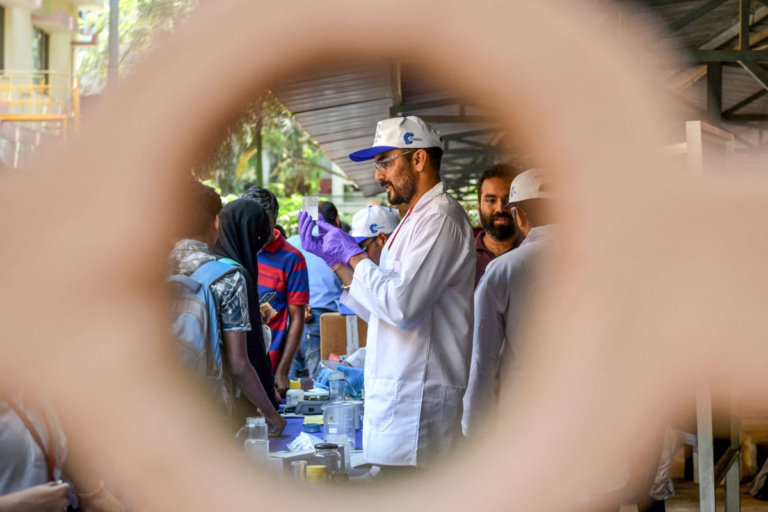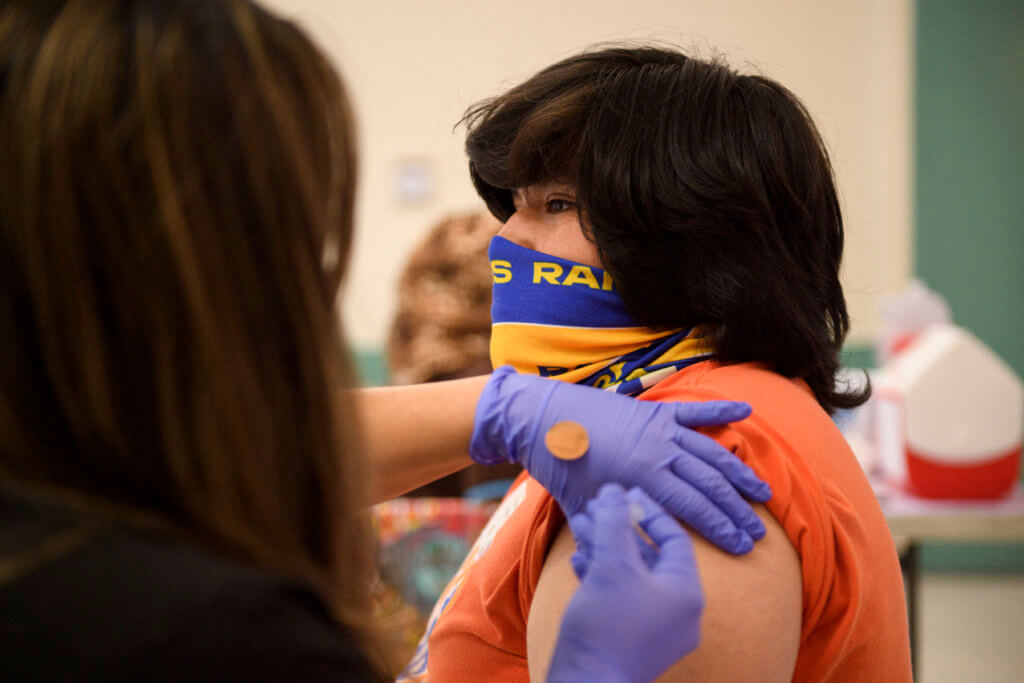
UCLA, UC Berkeley, and UC San Diego are set to reduce international student intake in favour of admitting more Californians, backed by a state-funded budget to deal with the anticipated revenue loss. Within five years beginning fall 2022, these three campuses are set to reduce non-resident student enrolment by 7% to make room for approximately 4,500 Californians.
The Los Angeles Times reports that the UC system wants to admit 6,230 more local freshmen in 2022. This comes after receiving a record number of applications for fall 2021, “in a year of high emotion and myriad questions over the admissions process and frustration over the lack of seats for qualified students.” This will come at the cost of 900 international students annually across the three UC campuses.

International students are advised to receive a COVID-19 vaccine before returning to UC campuses this fall. Source: Patrik T. Fallon/AFP
It is expected to accommodate UC admission reforms, thus reangling the public research university system as one that prioritises qualified Californian applications. This budget support should help cover the financial losses from reduced international student intake — around US$30,000 per student and US$1.3 billion collectively each year. Chancellors say the UC system stands to lose much more latent benefits.
“As state funding declined, the enrolment of non-resident students helped offset tuition costs for California students and provided revenue that enabled us to improve educational programmes for all students,” said UC San Diego Chancellor Pradeep Khosla. He maintained that non-resident students are enrolled only in addition to qualified California students, not in place of them. Their tuition — which is significantly higher than what domestic students pay — helps cover faculty recruitment, library collections, instructional equipment, and additional courses, which keeps classes small and focused.
Lower international student intake, lower revenue
Under this budget plan, California is set to fund the admission of more local freshmen in fall 2022 — that’s US$180 million to cover the UC and Cal State enrolment expansion. The state will also provide US$154 million for 133,000 community college students in fall 2021. On top of that, a US$2 billion fund will be created exclusively for student housing.
From 2017 onwards, international student intake at UC universities has been capped at 18% — except for UCLA, UC San Diego, UC Berkeley, and UC Irvine. UCLA Academic Senate chair Shane White calls for this rule to be analysed, along with other fundamental issues on international student intake within the state university system.

Stiffer competition for future international applicants to UC institutions. Source: Katharine Lotze/Getty Images/AFP
UC Berkeley Chancellor Carol Christ added that the current state allocation does not cover the actual cost of instruction. “Replacing out-of-state students with Californians thus creates a budget gap that needs to be filled,” she explained. “Even more important, out-of-state and international students contribute significantly to the diversity of the student experience, and the majority of these students remain in California after they graduate.”
The UC network includes ten campuses, five medical centres and three national labs. Californian universities have the highest international student intake in US. Over 160,000 are enrolled in the state’s institutions, with over 8,000 in UC San Diego. An estimated 20% to 25% are studying remotely from overseas during the pandemic, but not all may be returning.
Though international student intake may soon drop in these universities, foreign interest is still at a high. According to the Keystone Academic Solutions’ State of Student Recruitment USA 2021 report, 36% of international students choose California as their preferred US study destination. This suggests that international students will soon face stiffer competition when applying for their preferred UC university.
In May, the UC system proposed that every student returning from overseas must first receive a vaccine approved by the World Health Organisation. This includes Pfizer/BioNTech, Astrazeneca-SK Bio, Serum Institute of India, Janssen, Moderna, and Sinopharm. “We understand that there may be some remote instructions available as well because we do have learners from all over the world whose circumstances continue to evolve, but the intention is to highlight and continue to return to in-person learning as many ways as we possibly can,” added Vice Chancellor for Student Affairs Alysson Satterlund.










